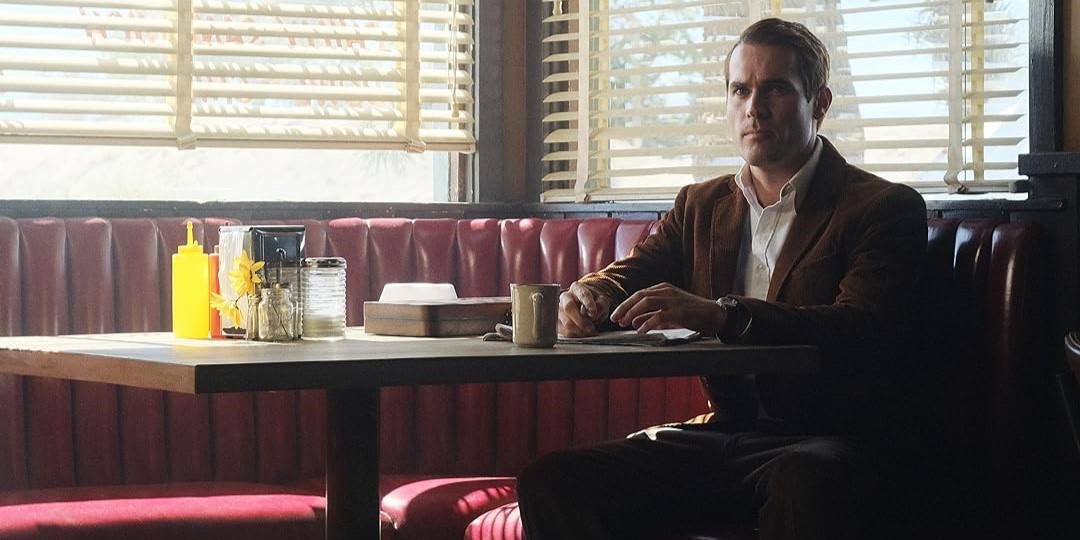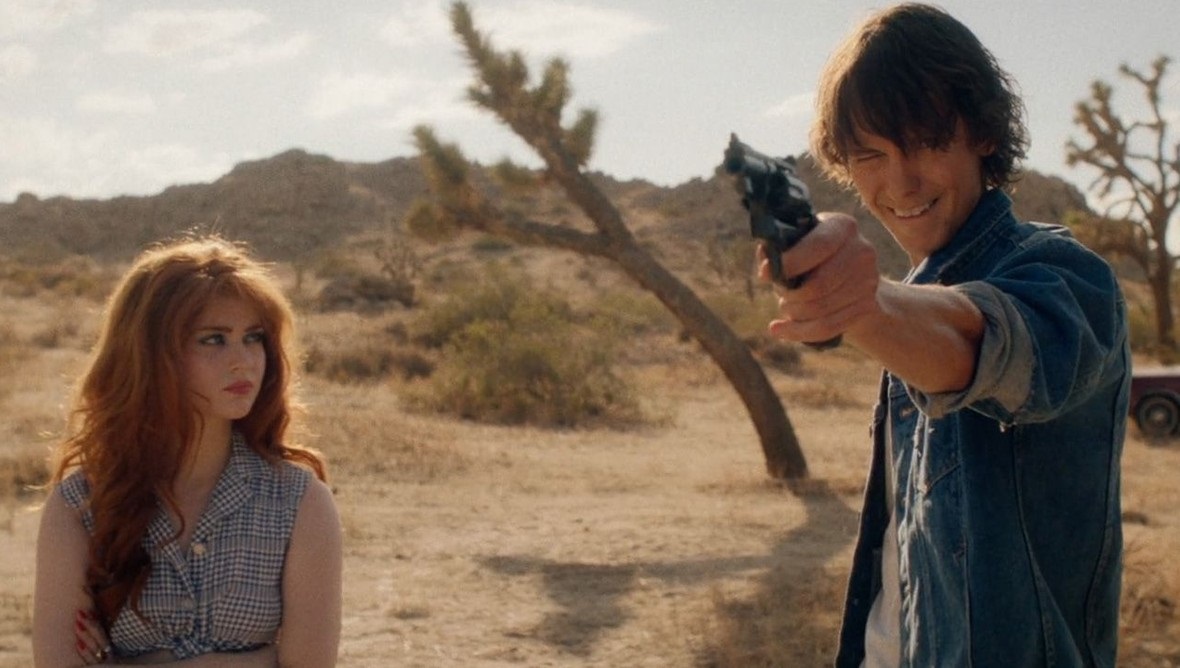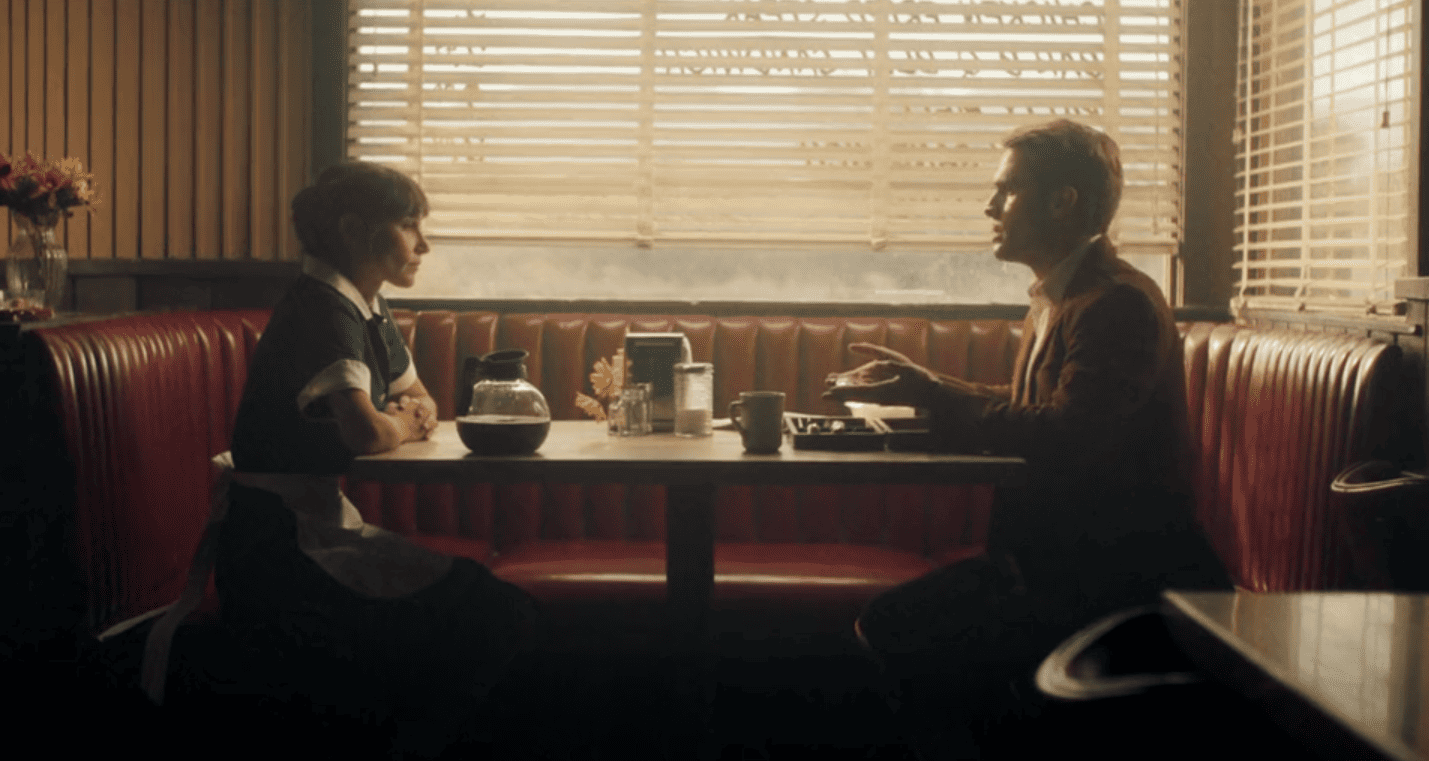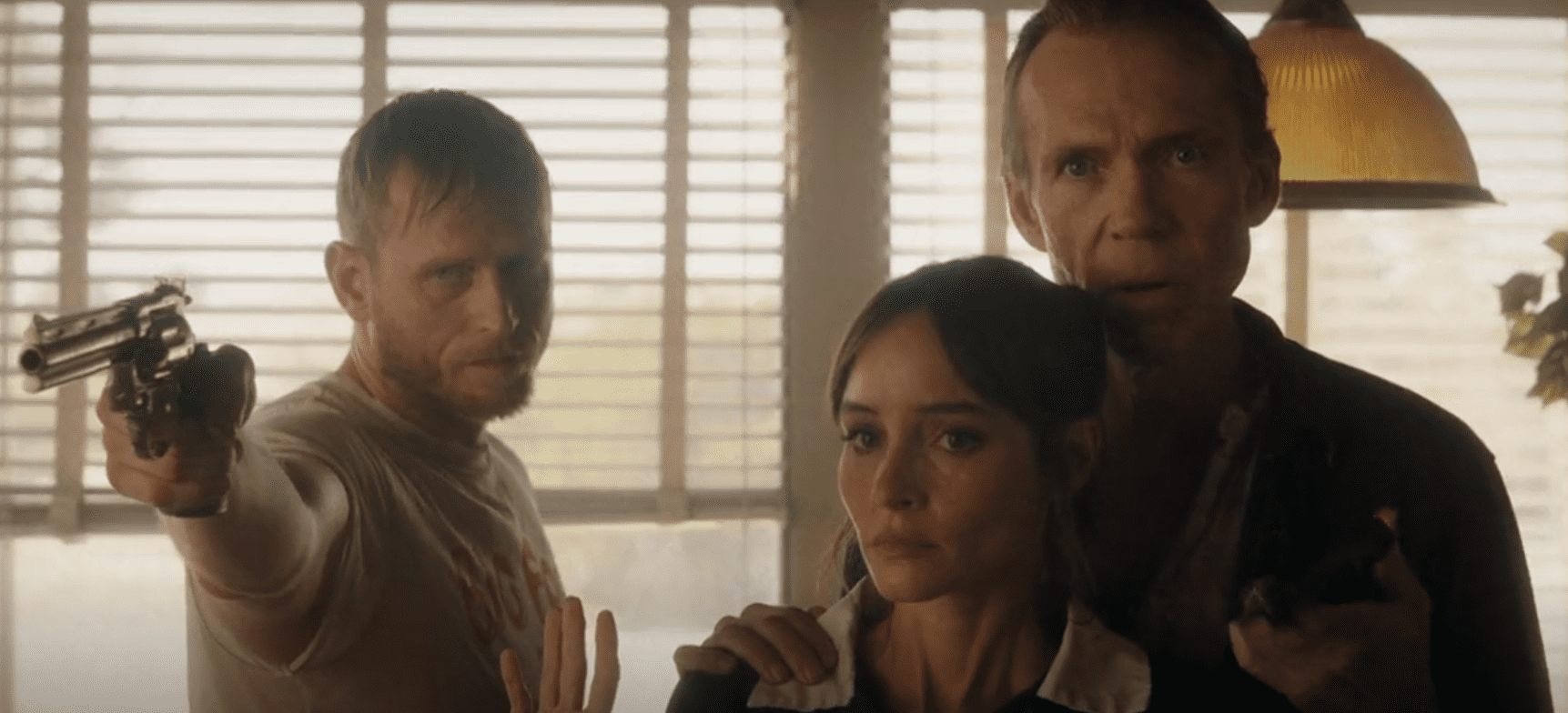Francis Galluppi’s feature directorial debut, ‘The Last Stop in Yuma County,’ follows a traveling knife salesman who gets stuck in a diner in remote Arizona country and witnesses a tense hostage situation that embroils him into chaos. In the film, we’re transported to a world where neo-noir filmmaking meets the over-the-top shenanigans of an old-school Western. The suspenseful narrative is driven by the compelling performances of the cast that comprises grizzled veterans like Richard Brake (‘Batman Begins’) and Gene Jones (‘No Country For Old Men’), with Jim Cummings as the aforementioned knife salesman and Charlotte (Jocelin Donahue) as the diner server.
With twists and turns and a good dose of suspense to keep you on the edge, it harkens back to grungy thrillers of the past that don’t come around too often these days. As we swing from one outlandish event to another and serendipitous incidents that keep you nail-biting, the inspirations behind this pulse-pounding thriller are worth digging into.
The Last Stop in Yuma County: A Lawless Land
‘The Last Stop in Yuma County’ is a fictional narrative born out of Francis Galluppi’s fascination with the film noir genre. It’s not a true story, but it is steeped heavily in the genre conventions that give rise to it. The film grounds itself in the underpinnings of its morally vacuous world and a race to the bottom that begins and ends with stolen loot. Subtlety is not the films intention when setting up these stakes, instead we’re pulled into the narrative through these well versed thriller motifs.

Jim Cummings knife salesman is characterised as an unassuming figure against Jocelin Donahue’s Charlotte, the diner waitress, who remains resolute and steadfast to her task even when two bank robbers have essentially hijacked her shop. With multiple chess pieces at play and a high stakes game of poker that involves life and death, it’s easy to see Galluppi’s directorial debut as nothing more than suspense drama at its finest. But to get the audience well and truly on their seat edges, he needs us to believe in the reality of his premise first.
The great thing about suspense in a film, is that it’s a valuable currency to trade in when you’re the filmmaker. In a fashion very reminiscent of Tarantino, Galluppi evokes those long drawn dramatic scenes seen in the likes of ‘Inglorious Basterds’ or ‘Reservoir Dogs’. Even the violence, when it does happen, has the heightened quality of a fight that starts and ends with abrupt force and almost instantaneously. From shots that linger on characters to conversations that have a slow but meandering tone to them, the influences behind Galluppi’s movie are many.

In Tarantino’s ‘The Hateful Eight,’ a bounty hunter (Samuel L. Jackson) gets stranded in a lodge after a blizzard strikes. Surrounded by snow on all sides, and a shelter full of people who have their own agendas at play, the bounty hunter has to fend off all manner of opposition while making sure he comes out of it alive. The premise and nature of the story have an arc closely resembling ‘The Last Stop in Yuma County.’ In Galluppi’s version, two bank robbers run out of gas and are stranded in a rural diner while waiting for their salvation in the manner of a fuel truck.
The central thread involving stolen money is something we’ve seen in the likes of Ethan and Joel Coen’s 2007 film ‘No Country For Old Men’, where a hunter finds a suitcase full of money in the aftermath of a drug deal gone wrong. Even 2010’s ‘The Town’ portrays something similar. The point isn’t that these films are identical but rather that they are hinging on the audience’s presupposed expectations for what this genre entails. It helps us immerse ourselves in the internal logic operating within the film’s narrative dimensions.
Richard Brake and Nicholas Logan, who play the bank robbers are said to be brothers in the film. A relationship of that kind is seen in David Mackenzie’s neo-western film ‘Hell or High Water’, where two brothers rob a string of banks in a setting and era very closely resembling the one from Yuma County. Both films are new-generation Westerns that seem to concern themselves with the question of morality in a remote and lawless backdrop. Galluppi’s influences are strong modern installations within an old genre full of classics.

‘The Last Stop to Yuma County’ feels like a familiar foray into already charted territory at times. From numerous plucked-out references to past films to nods and homages to others, it’s a dangerous territory to veer off to. But Galluppi clearly knows what he’s doing, despite his seeming inexperience at being a director. He even admits the various influences behind his film made him self-conscious at times. When talking about Stanley Kubrick’s ‘The Killing’ in an interview with Comic Book Couples Counseling, he said, “The ending of that movie, with the money flying around, I was like, ‘Oh my god, did I rip that off?’ I don’t know. I cannot confirm or deny. It was definitely an inspiration, and subconsciously, probably.”
True story or not, films rarely spring forth from nothing. Filmmakers and storytellers don’t exist in a vacuum or have a magic well that throws out free ideas or inspirations from time to time. ‘The Last Stop in Yuma County’ is a debut filmmaker’s attempt at recreating his favorite pieces of film noir from the past. A thriller that imitates ones that have come before but finds a way to be new and fresh all the same. They say art imitates art. But by extension art also imitates reality. Francis Galluppi embodies that in ‘The Last Stop in Yuma County.’
Read More: Last Stop in Yuma County: Exploring All Filming Locations


You must be logged in to post a comment.